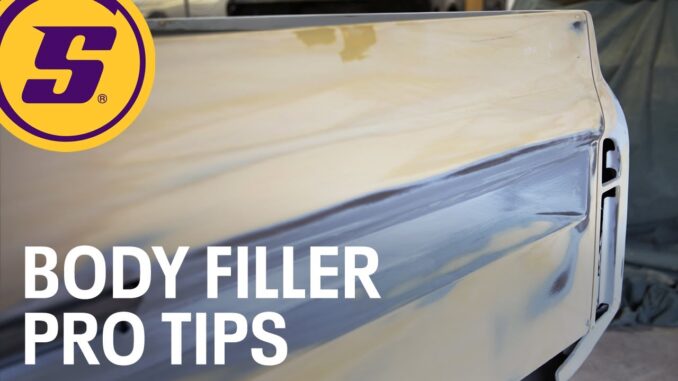
Using Body Filler — DIY Tips From A Show Car Builder
Bodywork is essential for anyone looking to restore or customize their vehicle. This article will delve into the process of achieving pristine bodywork, taking inspiration from a recent Speedway Motors Tech Talk video. Ben, a No Coast Custom and Rod Shop expert, walks us through the meticulous steps required to prepare your vehicle for a flawless paint job.
Step 1: Surface Preparation
Before diving into the world of body filler, it’s crucial to ensure that your metalwork is as straight as possible. Ben suggests starting with 80-grit sandpaper and a dual-action (DA) sander to remove any existing coatings from the surface. This step aims to provide a clean canvas for the subsequent processes.
Step 2: Applying Epoxy Primer
Once the metal surface is ready, apply epoxy primer and allow it to cure for about a week. Epoxy serves as a guide coat, revealing low spots in the metal during sanding. It’s an essential step to achieve a level surface.
Step 3: Identifying Low Spots
After curing, sand the epoxy primer with 220-grit sandpaper. This process exposes any low spots in the metal. Mark these areas to guide the filler application.
Step 4: Prepping for Filler
Before applying the filler, sand the low spots with a red Scotch Brite pad to ensure adhesion. The goal is not to expose bare metal but to provide a surface for the filler to grip.
Step 5: Mixing and Applying Filler
Mix filler according to the manufacturer’s instructions, usually a specific ratio of filler to hardener. Spread the filler evenly using a spreader tool, applying firm pressure. Ben emphasizes the importance of keeping the filler layer thin to avoid issues down the line.
Step 6: Feather Edging
As the filler begins to set but is still somewhat soft, you can feather edge it using a razor blade or pocket knife to trim any excess. This step ensures a smooth transition between the filled area and the surrounding surface.
Step 7: Sanding
Once the filler has fully cured, sand with appropriate grit sandpaper (usually 80-grit). Use a rigid sanding block to maintain a consistent level surface. Sand at a 45-degree angle to prevent deep scratches and work from the inside out.
Step 8: Reassessing and Refining
After initial sanding, assess the results. Look for any remaining low spots or unevenness. Repeat the filler application and sanding process if necessary until the surface is uniform and level.
Step 9: Achieving Perfect Gaps
For a show-quality finish, pay attention to the gaps between panels. Spread filler across adjoining panels and sand them together. This technique ensures that panels appear flush and seamless when assembled.
Step 10: Final Preparations
Clean the surface with wax and grease remover to eliminate any remaining dust or contaminants before moving on to the next stage.
Step 11: Priming and Painting
Following successful bodywork, proceed with epoxy priming the entire surface. After curing, apply a high-build primer, block sand it, and then finish with a urethane primer. Wet sand the primer, apply a sealer and use your chosen base coat or single-stage paint.
Mastering the art of bodywork is a meticulous process that requires patience and attention to detail. By following these steps outlined by Ben at No Coast Custom and Rod Shop, you can achieve a flawless surface ready for a professional paint job. Whether you’re working on a tailgate or other vehicle panels, these techniques apply across the board, ensuring your vehicle looks its best when you’re finished.




